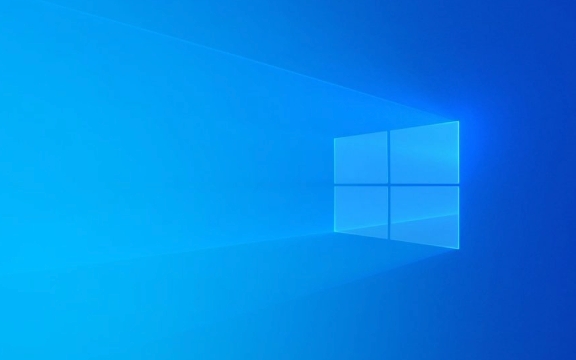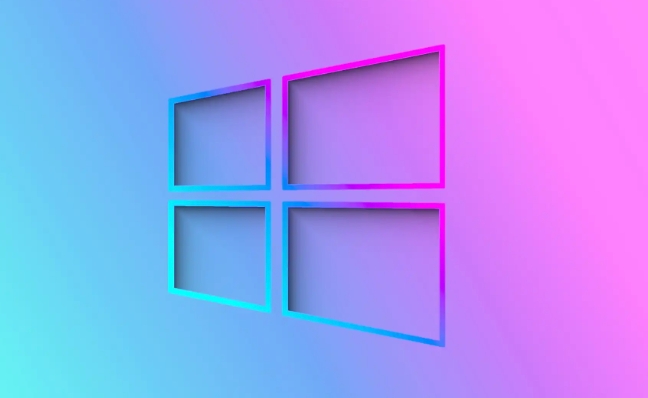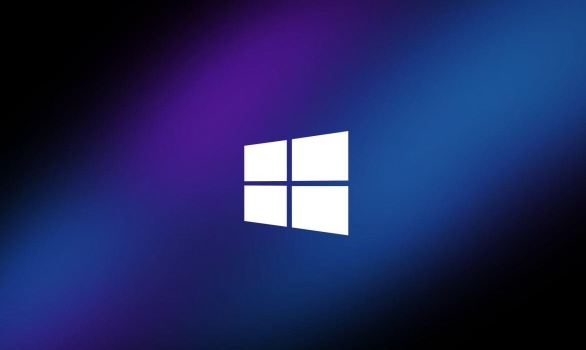How to enable Ransomware Protection in Windows Security
Jul 25, 2025 am 03:49 AMTo enable Ransomware Protection in Windows 10 or 11, open Windows Security, go to Virus & threat protection, click Ransomware protection, and toggle on Controlled folder access. 1. Open Windows Security via the Start menu. 2. Navigate to Virus & threat protection. 3. Scroll down and click Ransomware protection. 4. Toggle on Controlled folder access, approving changes via UAC if prompted. Note that some apps may be blocked, requiring manual approval through the “Allow an app” option. Ensure third-party antivirus software isn't disabling this feature and consider expanding protected folders and keeping your system updated for enhanced security.

If you're using a Windows 10 or Windows 11 machine, enabling Ransomware Protection is one of the smartest things you can do to keep your files safe from malicious encryption. It’s not foolproof, but it adds a solid layer of defense—especially against less sophisticated ransomware attacks.

What Is Ransomware Protection in Windows Security?
Ransomware Protection is part of Windows Defender and helps prevent unauthorized apps from making bulk changes to your files. It works mainly by monitoring file access behavior and blocking suspicious activity, especially in protected folders like your Documents, Desktop, and Pictures.
It uses a feature called Controlled Folder Access, which only allows trusted apps to modify files in those sensitive locations. If an unknown app tries to make a bunch of changes (like encrypting your files), Windows blocks it.

How to Turn On Ransomware Protection
Here's how to enable this protection without getting lost in menus:
- Open Windows Security (you can search for it in the Start menu).
- Go to Virus & threat protection.
- Scroll down to Ransomware protection and click it.
Under the Controlled folder access section, toggle it on. You might need to approve the change through User Account Control (UAC).

Once enabled, any app that isn’t whitelisted will be stopped from making changes to your protected folders.
?? Note: Some older versions of Windows may have this under "App & browser control" or require you to update Windows to get full support.
What to Do If Your Apps Get Blocked
Sometimes legitimate programs (like backup tools or photo editors) get blocked because they behave similarly to ransomware. If that happens:
- You’ll get a notification in Windows Security.
- You can go to Allow an app through Controlled folder access.
- Click Add an allowed app, then choose from the list or browse manually.
Be careful when adding exceptions. Only allow apps you trust completely.
Also, if you use third-party antivirus software, check if it disables Windows’ own Controlled Folder Access. Many security suites do, so you may need to manage ransomware protection through their interface instead.
Tips to Maximize Protection
- Keep Controlled Folder Access always on — it's lightweight and effective.
- Don’t ignore warnings — investigate them before allowing anything.
- Backup your files regularly — even the best ransomware protection isn't 100% foolproof.
- Make sure your system is up to date — Microsoft frequently improves these features.
You can also expand the list of protected folders beyond the defaults, though most people are fine with just the built-in ones.
That’s basically all there is to it. Not complicated, but often overlooked — and it could save you a lot of trouble down the line.
The above is the detailed content of How to enable Ransomware Protection in Windows Security. For more information, please follow other related articles on the PHP Chinese website!

Hot AI Tools

Undress AI Tool
Undress images for free

Undresser.AI Undress
AI-powered app for creating realistic nude photos

AI Clothes Remover
Online AI tool for removing clothes from photos.

Clothoff.io
AI clothes remover

Video Face Swap
Swap faces in any video effortlessly with our completely free AI face swap tool!

Hot Article

Hot Tools

Notepad++7.3.1
Easy-to-use and free code editor

SublimeText3 Chinese version
Chinese version, very easy to use

Zend Studio 13.0.1
Powerful PHP integrated development environment

Dreamweaver CS6
Visual web development tools

SublimeText3 Mac version
God-level code editing software (SublimeText3)
 How to Change Font Color on Desktop Icons (Windows 11)
Jul 07, 2025 pm 12:07 PM
How to Change Font Color on Desktop Icons (Windows 11)
Jul 07, 2025 pm 12:07 PM
If you're having trouble reading your desktop icons' text or simply want to personalize your desktop look, you may be looking for a way to change the font color on desktop icons in Windows 11. Unfortunately, Windows 11 doesn't offer an easy built-in
 Fixed Windows 11 Google Chrome not opening
Jul 08, 2025 pm 02:36 PM
Fixed Windows 11 Google Chrome not opening
Jul 08, 2025 pm 02:36 PM
Fixed Windows 11 Google Chrome not opening Google Chrome is the most popular browser right now, but even it sometimes requires help to open on Windows. Then follow the on-screen instructions to complete the process. After completing the above steps, launch Google Chrome again to see if it works properly now. 5. Delete Chrome User Profile If you are still having problems, it may be time to delete Chrome User Profile. This will delete all your personal information, so be sure to back up all relevant data. Typically, you delete the Chrome user profile through the browser itself. But given that you can't open it, here's another way: Turn on Windo
 How to fix second monitor not detected in Windows?
Jul 12, 2025 am 02:27 AM
How to fix second monitor not detected in Windows?
Jul 12, 2025 am 02:27 AM
When Windows cannot detect a second monitor, first check whether the physical connection is normal, including power supply, cable plug-in and interface compatibility, and try to replace the cable or adapter; secondly, update or reinstall the graphics card driver through the Device Manager, and roll back the driver version if necessary; then manually click "Detection" in the display settings to identify the monitor to confirm whether it is correctly identified by the system; finally check whether the monitor input source is switched to the corresponding interface, and confirm whether the graphics card output port connected to the cable is correct. Following the above steps to check in turn, most dual-screen recognition problems can usually be solved.
 Fixed the failure to upload files in Windows Google Chrome
Jul 08, 2025 pm 02:33 PM
Fixed the failure to upload files in Windows Google Chrome
Jul 08, 2025 pm 02:33 PM
Have problems uploading files in Google Chrome? This may be annoying, right? Whether you are attaching documents to emails, sharing images on social media, or submitting important files for work or school, a smooth file upload process is crucial. So, it can be frustrating if your file uploads continue to fail in Chrome on Windows PC. If you're not ready to give up your favorite browser, here are some tips for fixes that can't upload files on Windows Google Chrome 1. Start with Universal Repair Before we learn about any advanced troubleshooting tips, it's best to try some of the basic solutions mentioned below. Troubleshooting Internet connection issues: Internet connection
 Want to Build an Everyday Work Desktop? Get a Mini PC Instead
Jul 08, 2025 am 06:03 AM
Want to Build an Everyday Work Desktop? Get a Mini PC Instead
Jul 08, 2025 am 06:03 AM
Mini PCs have undergone
 How to clear the print queue in Windows?
Jul 11, 2025 am 02:19 AM
How to clear the print queue in Windows?
Jul 11, 2025 am 02:19 AM
When encountering the problem of printing task stuck, clearing the print queue and restarting the PrintSpooler service is an effective solution. First, open the "Device and Printer" interface to find the corresponding printer, right-click the task and select "Cancel" to clear a single task, or click "Cancel all documents" to clear the queue at one time; if the queue is inaccessible, press Win R to enter services.msc to open the service list, find "PrintSpooler" and stop it before starting the service. If necessary, you can manually delete the residual files under the C:\Windows\System32\spool\PRINTERS path to completely solve the problem.
 How to run Command Prompt as an administrator in Windows 10?
Jul 05, 2025 am 02:31 AM
How to run Command Prompt as an administrator in Windows 10?
Jul 05, 2025 am 02:31 AM
To run command prompts as administrator, the most direct way is to search through the Start menu and right-click "Run as administrator"; secondly, use the Win X shortcut menu to select "Command Prompt (Administrator)" or "Windows Terminal (Administrator)"; you can also open the run window through Win R and enter cmd and press Ctrl Shift Enter to force running as administrator; in addition, you can set shortcut properties to achieve automatic running as administrator. All the above methods require administrator permission and confirmation through UAC. Pay attention to security risks during operation.







